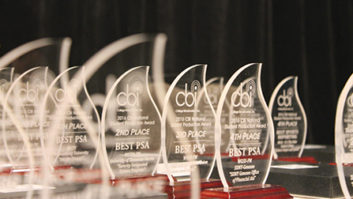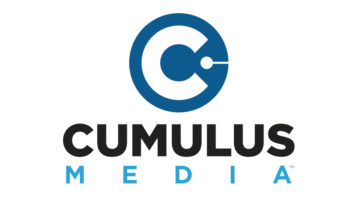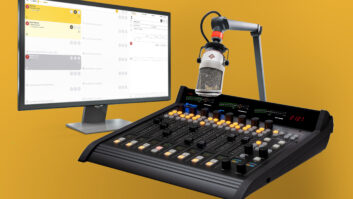The author is chairman of Digital Radio Mondiale.

I was recently invited to chair a “convergence and digital radio” session at an international “Asia meets Europe” conference held in Romania. When I asked the audience how often they had sat through such sessions in the past years, almost everyone in the audience raised their hand.
When I asked them to define convergence in two or three words, there was no rush. As a notion, digital convergence has been around for at least 40 years. Nicholas Negroponte, the MIT guru, defined it some decades ago as being all about bits or rather bits and bytes. Simply put, most of us understand digital convergence as combining multiple (digital) technologies into one.
At first glance, digital, converged technology allows 2.4 billion people to have instant access to the world’s knowledge, mainly on their smartphone, the ultimate converged “black box.” Others say that it is much more than that: a process, a new way of understanding and engaging with the world.
Digital convergence is part of a much-repeated set of labels that also includes phrases like the digital revolution, virtual reality, augmented reality, hybrid reality, artificial intelligence and so many more. It is a label but also part of a reality in which Generation Z (those born after 1995) are using digital formats at the expense of traditional radio (at least in the United States).
The idea of digital convergence did take a knock however when the dot-com bubble burst in the late 1990s. This showed us that old media (TV and radio) couldn’t be entirely replaced by the internet or new media. At the same time, though, old media would not be able to survive in its splendid analog isolation.
Many thought radio was primed for a big fall to all things internet. But this did not happen and in the process the medium gained an aura of great resilience, which is still strong today, despite the new threat from digital services.
Paradoxically, radio has always had inherent convergent attributes. Radio creates VR or AR in the mind, it is immersive (you can get lost in the story), it can be localized, even personalized, and it uses (real, not artificial) intelligence as it builds on the greatest of all media ingredients: storytelling.
But in the new converged world, the younger — and not so young — listener or consumer is used to being part of the story, to engage and interact. And analog radio cannot satisfy this newly acquired necessity.
It is true that not everything one hears on the radio needs to be reacted to, voted on or shared. It also means that there is a new relationship between being passively entertained and actively engaged, impossible without “the bits and bytes.”
Digital convergence in 2017 is a fusion between new and old media with digital radio as part of the mix. Radio is no longer just in the audio business but can produce long-form text, use internet material, supplement the audio with pictures and even carry short live video (in DRM this is called Diveemo), satisfying the need for depth and raising curiosity.
Now how about the one single digital device presenting this diverse, digital content? The idea of the unique and magic black box, has already been proven wrong. Digital radio can be delivered through digital TV but at a high cost. Digital TV cannot fully replace radio, while it can carry it as part of its bouquet of digital channels. Besides, have you ever thought of carrying your huge plasma TV in the shower to listen to the morning show?
We can get emails on the phone but still use a laptop with full internet and email features. Other better boxes complement the one “black box.” While digital radio incorporated in mobiles but delivered terrestrially remains a dream, digital radio delivered through the mobile networks is just a digital and money waste. Mobile streaming has an astronomical price tag when compared with the average cost of digital terrestrial broadcasting.
A DRM transmitter, for example, can cover up to thousands of kilometers. How many cell phones do you need for that? Probably no smartphone, 4G or IP will wipe out direct terrestrial broadcasting to car radios, the stand-alone receivers and, one day, mobiles with incorporated digital radio. It will just add to the many ways in which interesting digital content reaches the listener.
Convergence and aggregation at the level of content must be doubled by varied and appropriate digital distribution channels. There is not one single black box or one single cable or wave that is cheap, converged and ready to solve all the ambitions of broadcasters or users. The sooner broadcasters begin to implement convergence where it works and stop trying to converge at any price, the better.
At the end of the conference session held in September, we concluded that convergence was new and old woven with intelligence in new creative ways. We must hurry, though, as, according to Negroponte, “biotech is the new digital” and we are soon to ingest our information.
I, personally, am not ready to swallow my radio yet.












